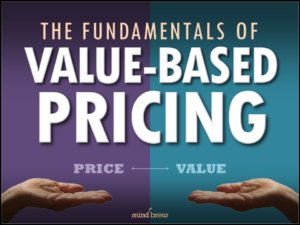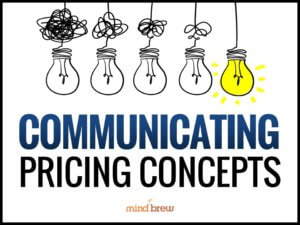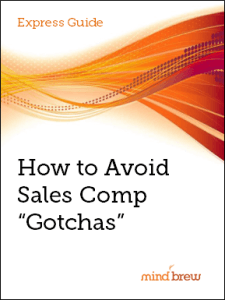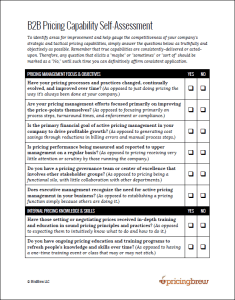B2B pricing teams rarely (read, “never”) have control over the entire pricing process. Your group might create the price list or recommend prices, but sales teams often have the final say on the numbers the customers see. In some cases, marketing might also want to have input, or senior management might even completely override pricing’s recommendations.
This situation is difficult for sure, but it’s not insurmountable. One way to make headway is to educate your organization about four key pricing concepts:
- Pricing Power or Leverage—People who don’t work in pricing sometimes try to argue that “It won’t hurt to give them a small discount.” It’s true that when you look at just the revenue numbers for a single deal, a 1% or 5% or even a 10% price break doesn’t seem all that significant. But when you subtract out the fixed costs, these small discounts can have an enormous impact on margins. And when you multiply that difference across all your product lines and customers, small discounts can be the difference between being highly successful and going out of business. Often the most effective way to drive this point home is to do the math based on one or two of your actual deals. Proving the Value of Pricing offers additional tips that can help in communicating this idea effectively.
- Price Segmentation—Most people expect that every product has a uniform price that every customer will pay. After all, the majority of the things we buy, like groceries and clothes and electronics and so on, cost the same amount no matter who is buying. But in B2B, pricing can work differently. We can charge customers different prices based on their willingness to pay, and by grouping customers according to different attributes that affect willingness to pay, we can maximize profits. The guide to How to Explain Price Segmentation to Others offers some excellent resources that can help you explain these concepts in layman’s terms.
- Price Elasticity or Sensitivity—Salespeople often try to argue that a small price increase will drive customers away. They usually base this belief on their “gut instinct.” The way to counter these opinions is with hard data. If you can show people how price elasticity allows you to predict with high accuracy the effect that pricing changes on customers, they will often come around. The key is that in order to make this work, you need to have well-defined pricing segments, and you need to have done your homework in calculating price elasticity numbers for each of those segments. If you need a refresher on how to do these calculations, check out the webinar on Business-to-Business Price Elasticity.
- Differential Value—Far too many B2B firms continue to use cost-plus pricing. But customers don’t care what your costs are. They only care about how much value they get from your products and services compared to how much they pay for them. For some of your products, customers might see a differential value that is only 5% over your costs, but for others, they might see a differential value that is 100% or 200% over your costs. When you price based on this differential value, you’ll maximize both your sales and your margins. The Fundamentals of Value-Based Pricing explains this concept—as well as many others that are critical for B2B pricing.
You don’t need to turn everyone in your company into a pricing expert. However, you do need to help them gain a baseline of knowledge so that you can at least speak the same language. The more you can move away from arguments based on opinions and discussion based on data and hard facts, the better off you’ll be.
For a host of tips that can help, check out the webinar on Communicating Pricing Concepts. You might not be able to control every aspect of your company’s pricing. But you can communicate the reasons behind your decisions. And that dramatically increases the likelihood that the rest of your organizations will follow your recommendations.


















